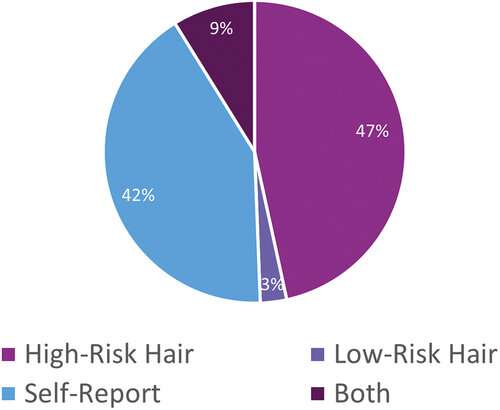This article has been reviewed according to Science X's editorial process and policies. Editors have highlighted the following attributes while ensuring the content's credibility:
fact-checked
trusted source
proofread
Hair analysis shows child drug use could be twice as high as previously thought

Hair analysis could be the key to understanding adolescent drug usage, as a new study uncovers almost double the number of children were found to be using substances than those who admitted to in a U.S. survey.
Published in the journal American Journal of Drug and Alcohol Abuse, the research looking at more than 1,300 children, aged 9 to 13, found a 9% increase in substance use when adding hair analysis results to those of the survey.
The paper suggests hair analysis far outweighs the accuracy of assessing drug use compared to survey alone, and experts recommend that future research should combine both methods.
"It's vital that we understand the factors that lead to drug use in teenagers, so that we can design targeted health initiatives to prevent children from being exposed to drugs at a young age," says Natasha Wade, an assistant professor of psychology at the University of California, San Diego, who led the study.
Adolescent substance use is a serious public health issue, with 5% of U.S. 8th graders (ages 13–14) reporting cannabis use in the last year. The numbers are even higher for alcohol and nicotine use, with 26% of 8th graders admitting to drinking and 23% to smoking nicotine in the past year.
These numbers are worrying enough, as substance use during adolescence is linked to a whole host of negative life outcomes—including poor academic achievement, mental health problems and changes in brain function.
But what if the figures are actually greater than this?
To find out a multidisciplinary team of experts, led by Dr. Wade, asked 1,390 children whether they had taken drugs in the last year. Hair samples were then also taken so that independent tests could confirm whether recent drug-taking had taken place.
Of the children who were asked if they had taken drugs, 10% agreed that they had. Hair analyses also showed that 10% of adolescents overall tested positive for at least one drug, with 6.1% testing positive for cannabinoids, 1.9% alcohol, 1.9% amphetamines, and 1.7% cocaine.
However, the children that self-reported drug-taking were not the same as those who tested positive through hair samples. In fact, of the 136 cases that self-reported any substance use and 145 whose hair samples were positive for any drug, matches were found for only 23 cases.
Most importantly, hair drug analysis revealed an additional 9% of substance use cases over and above self-report alone, nearly doubling the number of identified substance users to 19%.
"A long-standing issue in substance use research, particularly that relating to children and adolescents, is a reliance on self-reporting despite the known limitations to the methodology. When asked, children may mis-report (unintentionally or intentionally) and say they take drugs when they don't, or conversely deny taking drugs when they actually do," Dr. Wade adds.
"But rather than scrapping self-reporting of drug use altogether, a more accurate picture of teenage substance use can be gained by measuring both.
"Self-reporting has its own strengths, for instance young people may be more willing to disclose substance use at a low level, but are less likely to when frequent drug-taking patterns emerge.
"Conversely, hair assays are not sensitive enough to detect only one standard drink of alcohol or smoking one cannabis joint. Instead, the method is better at detecting frequent and moderate to heavy drug use.
"Combining both methodologies is therefore vital to accurately determine the levels of substance use in the teenage population."
Commenting on the findings of their paper, the authors also add however, that it is important to note that there is a chance that some, perhaps even many, of these youth are unaware that they even used a substance, as it could have been given to them by a parent or peer or they may have simply forgotten they had used it.
More information: Natasha E. Wade et al, Concordance between substance use self-report and hair analysis in community-based adolescents, The American Journal of Drug and Alcohol Abuse (2023). DOI: 10.1080/00952990.2023.2164931



















